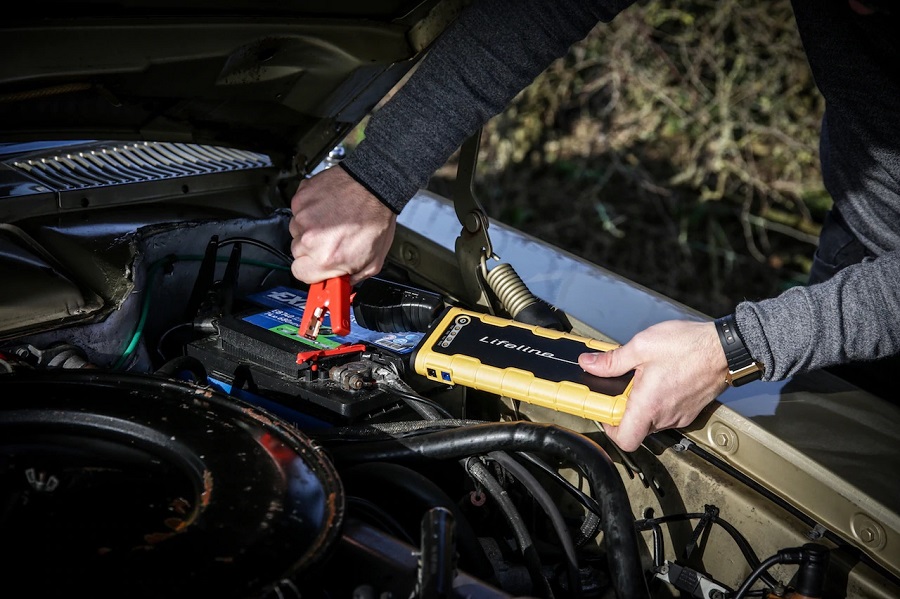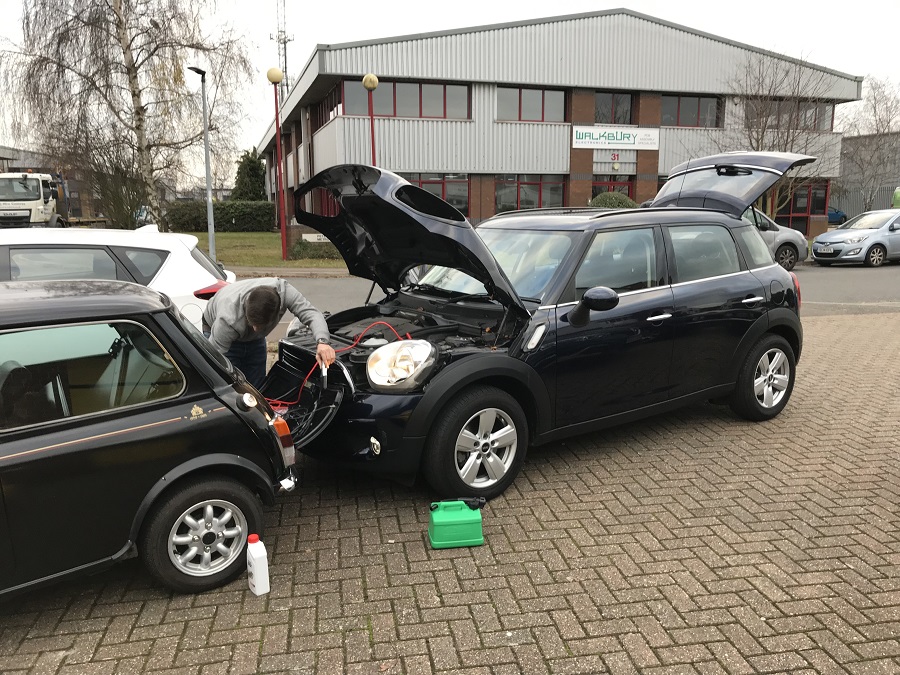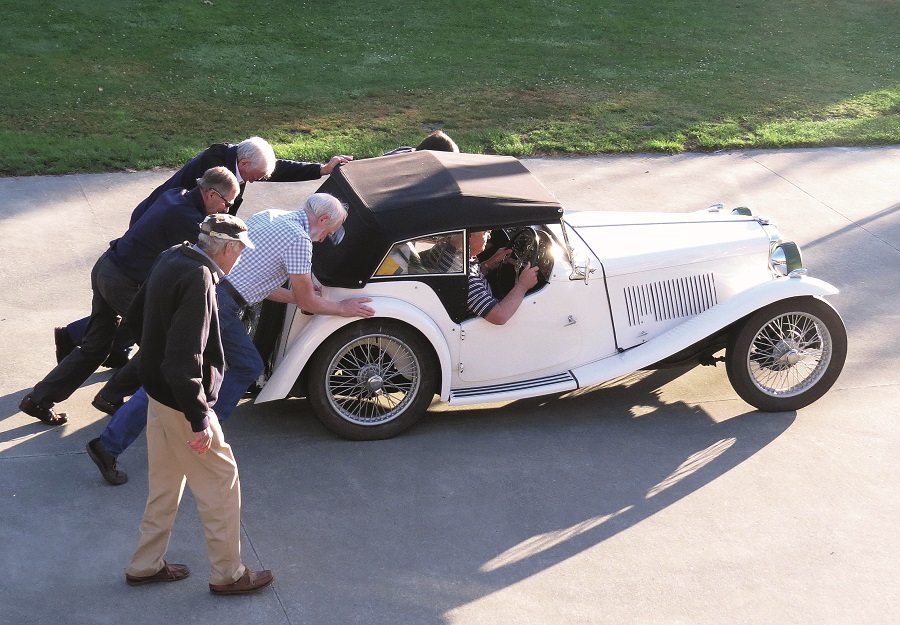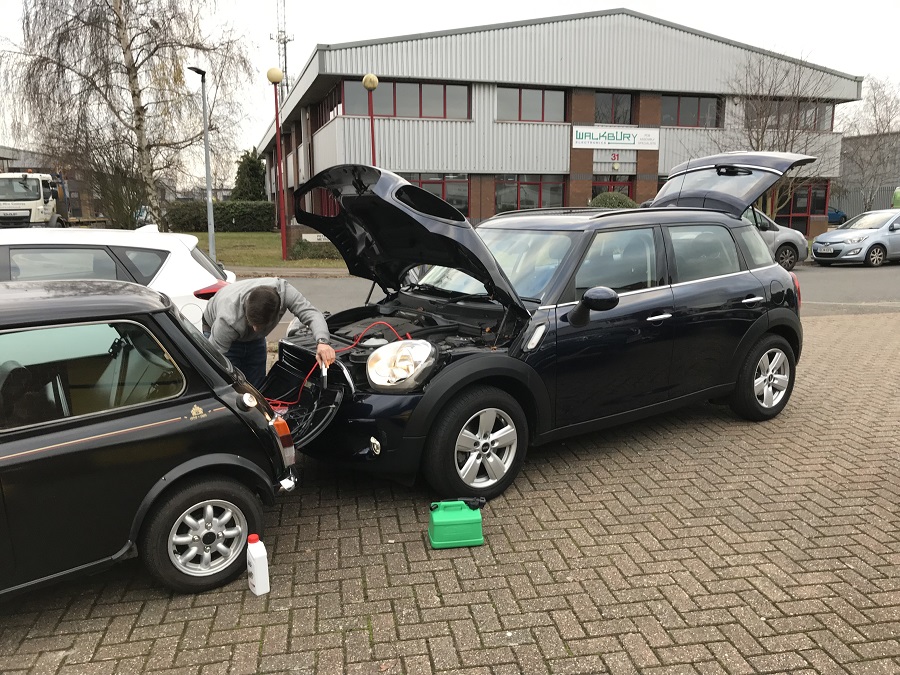Battery dead but need to drive somewhere? Here’s how to jump start a car, no matter what sort of equipment you’ve got to hand.
Nightmare. You’ve just sat down in your car ahead of a long journey to meet up with some friends, but when you twist the key in the ignition… nothing. At best, a little *click click* or labored starter motor noise. Damn, the car battery’s dead…
In this instance, there’s no time to remove the car battery and let it trickle charge for a while. You’ll miss your plans if you do that. Instead, you need a quick solution. Luckily, we’re here to help – here are a few different ways to jump start a car:

How to jump start a car with a portable starter
In an ideal world, you’ll have had the foresight to buy one of these super-useful portable battery jump starters. These handy bits of kit have saved our bacon countless times, and the best part is that they’re incredibly easy to use.
All you have to do is attach the supplied set of jump leads to the portable starter, then hook their crocodile clips up to the corresponding positive and negative terminals on your car battery. Next, there’s usually a little button you need to press to send the electric surge, after which you should hear a small click.
With that done, hop back into the car, and try to turn it on again. If it still won’t turn over, you might need to give the battery a second shot of juice, but in most cases it’ll work first time. So long as the battery isn’t completely drained, that is, and that your kit is rated correctly for your car’s engine displacement.

How to jump start a car with jump leads
However, what if you’ve forgotten to charge up your portable starter? Or, what if you don’t own one in the first place? Well, you’re probably more likely to own a set of traditional jump leads.
The premise behind these is very similar to the portable starter, except you’ll need access to a second running car to take the place of the portable box. If you do have access to another car, start by joining the negative battery terminal of the running car to a ground of the dead car. Do this with the black (negative polarity) jump lead. Some vehicles have designated ground spots, but if not, opt for a bare piece of structural metal located somewhere away from the fuel system. Most importantly, don’t just simply use the negative terminal on the dead car’s battery.
Once you’ve got that sorted, take the positive red jump lead and connect the two cars’ positive battery terminals. Then, start up the live car and let it idle for a bit. Some people are tempted to rev the live car, but its much better for both you and the cars’ health if you don’t. After about a minute of idling, attempt to turn the dead car on again. It should burst (or splutter, if the battery was really low) into life.

How to bump start a car with no tools
But, what if you don’t have a second car, or any of the above equipment, available to you? Well, in desperate times, there is one other option you can try, but it only works on cars with manual transmissions. Bump starting is a technique which doesn’t rely on the battery to turn the engine over. Instead, it uses the rotational energy of the wheels.
The Planning Stage
First things first, you’ll need to make sure that the electrical load is at its lowest possible point – put simply, ensure that nothing electrical (whether it be the radio, lights, or air con) is set to the ‘on’ position. Now that you’ve made it as easy as possible for the car to start, you’ll need to consider the process of setting the car in motion.
There are a few factors to think about here. Namely, how are you going to get the car to roll, and what is the car’s trajectory? There’s a few ways you could tackle the first conundrum. If you’re at the top of the hill, you could simply release the handbrake. Or, if you’re on flat land, you’ll need a few friends or helpful passers-by to give you a push to get the car rolling.
As for the latter consideration, you’ll want to make sure that your car is pointing in a direction that isn’t going to cause chaos. I mean, you don’t want to roll embarrassingly into your neighbor’s wall. So, make sure you’re able to give the car a clear run, and if you need to steer to achieve that, bear in mind that you won’t have power steering available to you (since the battery’s dead).
Putting the plan into action
With preparations out of the way, it’s time to put the plan in motion. Switch the ignition into position two (the position just before the one that starts the engine) and dip the clutch to select your chosen gear. If you haven’t got much room to roll, first gear is the best option, but second gear is more favorable if you’ve got a nice clear stretch ahead of you. Obviously, if you need to roll the car backwards, you’ll want to select reverse instead. Whichever gear you’re in, keep your foot pressed down on the clutch pedal.
Next, you need to get the car rolling however you previously decided to do so. Once the car reaches a speed of around 5-10mph, lift your foot up and release the clutch pedal as you normally would when you’ve finished selecting a gear to change into when driving. This should see the car spark into life, but if not, you can give it a couple more tries. I wouldn’t recommend any more than three attempts though in order to avoid causing internal damage to your car. And besides, if it still isn’t starting at this point, chances are you’ve got a bigger problem on your hands.
To help you make that assessment, read our guide on how to test car batteries next.








